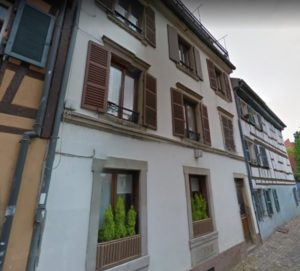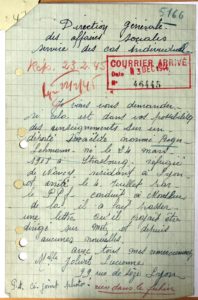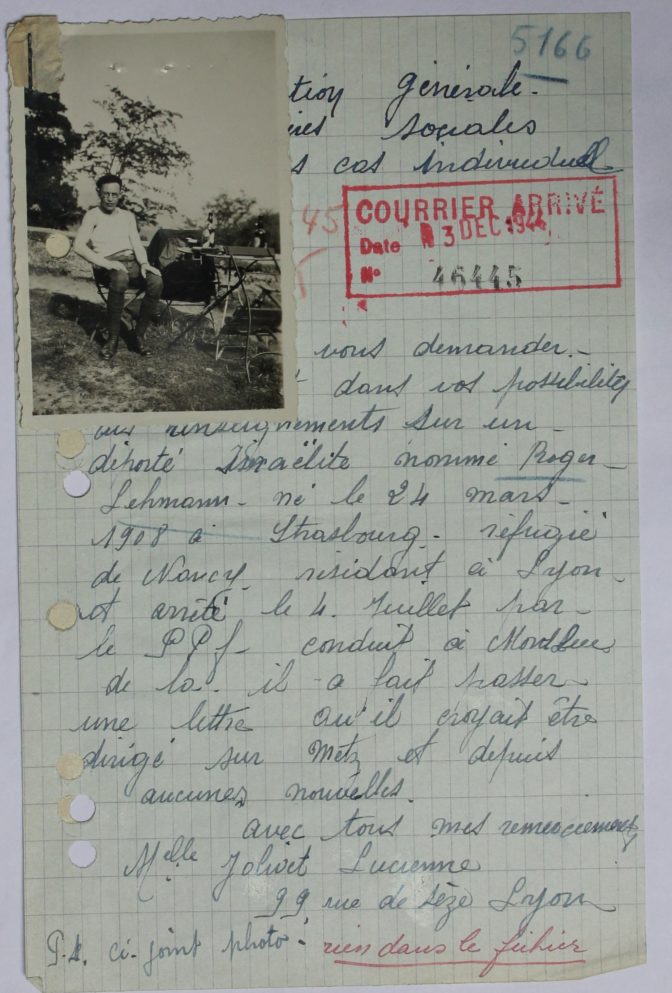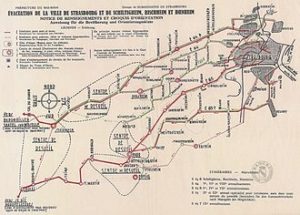Roger LEHMANN
The image below is a reproduction of a photo of Roger Lehmann, sent by Lucienne Jolivet from Direction Générale des Affaires Sociales, Service des cas individuels, in December 1944. Fonds PAVCC du SHD de Caen, dossier n° 21 P 475 264.
Roger Simon Lehmann, son of Alfred Aron Lehmann and Céline Lehmann, née Klein, was born on March 24, 1908 in Strasbourg.
He had two brothers, Léonce and Armand, and lived with his family at 1, Impasse de la Lune in Strasbourg.


No definite information about his youth exists.
Following the Armistice on June 22, 1940 and the collaboration with the Axis powers (that is to say the cooperation with the Nazi occupiers by the Vichy Regime) Roger became Adjudant in the occupying army, like all the people of Strasbourg that was immediately annexed by the German army.
He managed to leave Strasbourg in 1940 like many other Alsatians and met up with his brother Léonce in Perigueux in Dordogne. Afterwards, in 1942, he moved to Lyon where he lived at 234 rue du Guesclin and found a job. He was then caught during a roundup in Lyon by two fascist and anti-semetic bodies: the Gestapo, the political police of the Third Reich, and the PPF (Parti Populaire Français or French Popular Party) militia.

Drancy internment camp
Believing he was being sent to Metz, Roger wrote his last letter before his transfer to Drancy to his friend Jean Balsegur, who lived at the same adress as Roger in Lyon but never found out what had happened to him.
In this letter Roger speaks a woman named Miss Lucienne Jolivet who he nicknamed Juju. She lived at 99 rue du Sèze in Lyon. She may have been Roger’s partner, but there is no official proof of their relationship since Roger was declared as being single with no children in a town planning information note which was made during an investigation request dated April 10, 1954 of the Bas-Rhin prefect.
Roger Lehmann died after being deported seemingly on August 5, 1944 in Auschwitz in Poland (Summary death certificate n°22 of registry 99 in file n°21P475264).
On October 20, 1948, in Paris, Roger Lehmann was presumed dead and a death certificate was issued by the Minister of Veterans Affairs and War Victims.
After the Liberation of France, Léonce and Julienne did some personal research, but they were unable to find the reasons behind Roger’s arrest and do not know the exact circumstances of his last few days. However, in light of testimonies from survivors of concentation camps and the information we now have concerning the martyrdom of the six million exterminated Jews, one can imagine how his last days must have been.
Évacuation des civils en France en 1939-1940
In Alsace
The order to evacuate the city of Strasbourg was given immediately after the declaration of general mobilisation on September 1, 1939. From September 2, 1939, while soldiers were setting up in the Maginot line fortifications, the inhabitants of the communes[(French equivalent of civil townships)] located on the east side of the line were evacuated to assembly centres in the Vosges with a maximum of 30 kg of luggage per person. The first convoys going towards the South-West of France left that day.
After the declaration of war by the United Kingdom, Australia, New Zealand and France against Germany, the evacuated inhabitants had to travel away once again. On September 9, 374,000 Alsatians evacuated from 181 communes headed for the South of France.
The inhabitants of 107 communes in the Bas-Rhin region mainly seeked refuge in Dordogne (80,000 people, including around 60,000 from Strasbourg), in Haute-Vienne and in Indre (20,000 people).
The inhabitants of 79 communes of the Haut-Rhin were evacuated to Gers, Haute-Garonne and Landes.
After a long and tiring journey (hours of waiting, crowded trains, cattle wagons, up to 60 hours long), for many Alsatians it was their first time seeing a different French province. Despite some misunderstandings due to the different mindsets, different lifestyles, different religious practices and above all different languages, long-lasting relationships were born.
A second wave of evacuations was hastened due to the German offensive launched on May 10, 1940. Under the threat being encircled by the enemy, the 8th French army, which was guarding the Rhine in Alsace, had to withdraw to the Vosges and the Belfort Gap [(plateau located between the northern rim of the Jura Mountains and the southernmost part of the Vosges)] on June 13. On the 14th, the day that Paris was captured, the remaining Alsatian administrative services withdrew and on the 15th the Germans finally crossed the Rhine in Alsace.
Starting in July 1940, the Alsatians were encouraged to return home by the Nazis. Alsace-Lorraine was annexed in practice by the Third Reich on November 27, 1940. Alsace, renamed “CdZ-Gebiet Elsass”, was integrated into the German territory of Baden.


 Français
Français Polski
Polski











